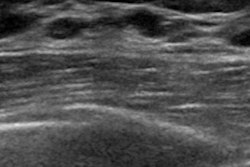Dear Ultrasound Insider,
Pneumonia is a leading cause of death in children around the world, and incidence is particularly high in developing countries. But diagnosis of pediatric pneumonia can be challenging, in part due to the variation in signs and symptoms.
Pneumonia has typically been identified with chest x-ray and clinical presentation. Chest CT is also used and has excellent diagnostic accuracy, but its drawbacks include radiation exposure, high cost, and the possible need for sedation of pediatric patients.
That's where lung ultrasound comes in. Researchers have determined that the modality is a viable alternative to chest x-ray and CT for diagnosing pneumonia in children, with a sensitivity of 94% and a specificity of 92%. Find out more in this edition's Insider Exclusive.
After you've read our featured story, take a look at what else is going on in the Ultrasound Community:
- Find out how computer-aided detection can boost reader performance in interpreting automated breast ultrasound studies.
- Read how ultrasound helps distinguish between ductal carcinoma in situ and fibroadenomas.
- Learn more about what Stanford University researchers have found regarding ultrasound as an effective tool for assessing the future risk of deep vein thrombosis in patients who receive radiofrequency ablation or laser ablation.
- Discover why the combination of ultrasound- and MRI-guided biopsy yields the best chance of detecting prostate cancer.
- Check out what contributing writer Simon Harris of Signify Research has to say about the five trends that are shaping the future of global ultrasound.
If you have a comment or report to share about any aspect of ultrasound imaging, I invite you to contact me.




















